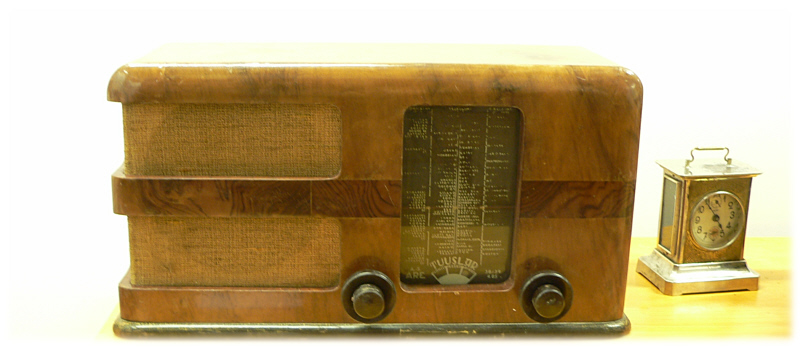Media research

1. INTERNET FOLKLORE and FOLKLORE in the INTERNET
To cover the domains which have not yet been studied (temporary or permanent on-line groups such as geocachers, SF and pet-owners, patients with serious or incurable medical problems, etc.), to characterize the communication models, the spreading of information and lore in a group or virtual community; to observe communication between professionals and non-professionals (medical professionals versus patients and their kin; astronomers versus amateurs; anonymous web echoes in public forums); to carry out theoretical-practical research in the field of folklore databases and portals; to promote Estonian local and international research in the field.
1. Grant Cultural Processes in the Changing Society: Tradition and Creativity in Post-socialist Humour, ESF 8149. Describing intercultural conflicts and humour, the role of creativity and tradition in helping to shape the „humour identity“ of post-socialist societies, the uses of joke texts in political discourse; cultural differences in humour communication / appreciation; the interaction between humour and value shifts.
Internet: Characterising the interaction of the new media with both the content and form of (youth) humour, giving an account on the issues of anonymity and authorship, orality and literacy, universality and specificity of Internet (joke)lore, and describing the implications of these in the conflicts about tastes in humour.
2. Grant Cultural processes in the Internet societies. Narratives, values and places, ESF grant 8137. The main goal ist o research the formation of identity and personal relations of online communities together with textual production of main types of cyber-communication, with a number of characteristic values that have been identified. Our focus will be the place and space and the processes of folklore online. Main issues treated in this grant project include: 1) Mechanisms of place creation. 2) The sociocultural position various folklore genres online, also the application of traditional folklore to constructing cyberlocality, how this reflects values and which models are used. 3) Narrative models online and their application in various situations. 4) Use of traditional folklore to demonstrate personal identity (in blogs, photo sites). 5) The personal experience narratives as carriers of culturally significant messages. 6) The use of folklore in commercial internet sites.
A special research will cover also feasts and celebrations and the media influences, finno-ugric cultural eritage and special features of the youth lore.
2. Applied research and projects

One of the main directions throughout the years has been intensive work on digital media and databases: publishing folkloristic journals and digital publishing of studies; creating databases (18 databases of different scope), publishing e-anthologies of folklore, creating the digital cultural history map layers of RADAR and its corresponding databases.
Analysis of the locations of natural and cultural objects integrated with folkloristic data in Mapinfo is analysed with mathematical and statistical methods as applicable (T. Jonuks, H. Hanni, et al.). Sotware modules are improved in their ability for post-treatment of text, automatic classification of documents and terms, for making information retrieval irrespective of used language.
Improving semantic relating and visualisation of text and visual material integrated into databases, problems of formalising different large text corpora (dialect texts, phraseology, narratives) and solutions for this.
Samuti on pooleli pärimusainese korpusanalüüs rahvaluule fenomenide (lingvistilised üksused, motiivid, tüübid, usundinähtused, skriptid jmt) kaupa ning nende levila kaardistamine (A. Krikmann, M. Kalda jt).
1. Bibliometric and historiometric analysis of folklore, IVB.
The international bibliography of ethnology and folklore "Internationale
Volkskundliche Bibliographie" has been continuously published since 1919.
The bibliography has been recording bibliographic data on significant
publications in Europe and countries with strong European cultural
connections. Since 1995, the Estonian records have been accumulated by
Karin Maria Rooleid (Ribenis). Since August 2002, or since the volume
concerning publications from 1999 (published in 2003), Karin Maria Rooleid
has been responsible for compiling the IVB and co-ordinating the network
accumulating the data. The project is connected with Deutsche Gesellschaft
für Volkskunde (DGV) and Société Internationale Ethnologie et de Folklore
(SIEF) Commission for Bibliography, Information and Documentation.
2. "BERTA" ehk Web-based databases/portals, which is intended to inform users about the ritual Estonian folk calendar. BERTA currently introduces about 80 folk calendar holidays of varied importance and is as such the largest and most comprehensive corpus of Estonian folk holidays, beliefs and music. The database also presents a selection of (major) Russian Orthodox holidays as well as holidays of Estonian school calendar (especially those exhibiting features characteristic of a popular calendar holiday).
Project Finnic-Ugric Cultural Heritage .
For Wider audience:
Publications and databases
1. Database of South-Estonian heritage LEPP, 2006-2007, 2010-2013
The database of South-Estonian heritage LEPP and its web interface with additional background information, is a concentrator of folk tales and songs, belief accounts, games and customs recorded from the historical South-Estonian counties and parishes.
2. Sõrve tradition, 2009-2010, heritage on Sõrve peninsula.
3. Under the foreign stars, 2010-2011.Diaspora heritage, language and culture. Studies into Estonian Diaspora and migration from the aspect of folklore studies and cultural history and the output as the portal are the main goals of the project.
Research is supported by projects:
The Widening and introducing of Estonian language, culture and folklore on electronic info carriers, 2009-2013.
The Widening and introducing of Estonian language, culture and folklore on electronic info carriers, 2004-2008.
Publishing of the peer-reviewed humanities journal "Folklore: Electronic Journal of Folklore"
Introducing Estonian cultural history and folkloristics on the international scientific arena, 2008.
Compilation of an electronic base dictionary of Estonian phrases
Databases:
See databases under the link A Databases.
E-publications:
EKM Fo , EFI
Pildid Andres Kuperjanov
© 'mare 2010